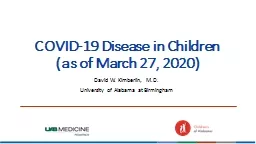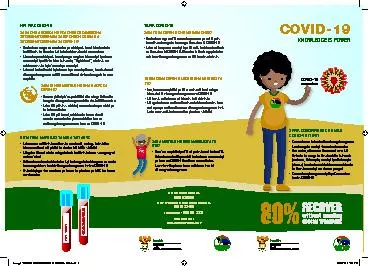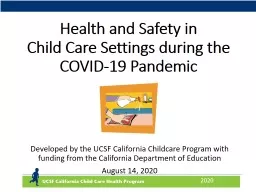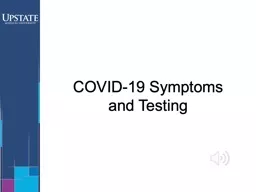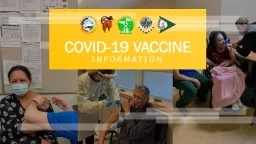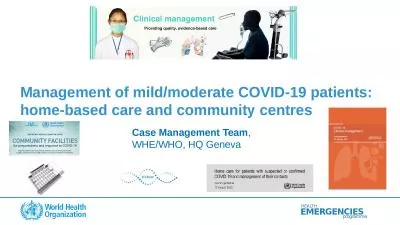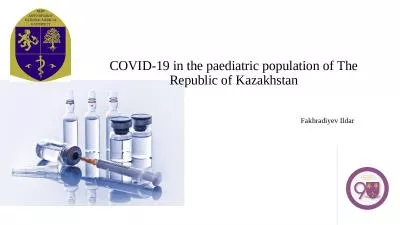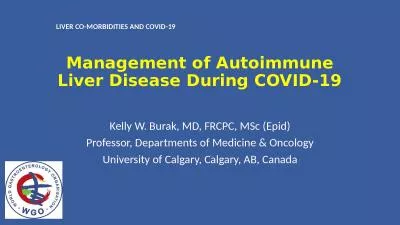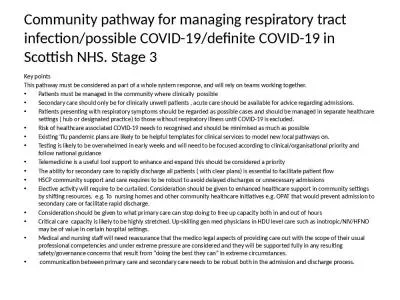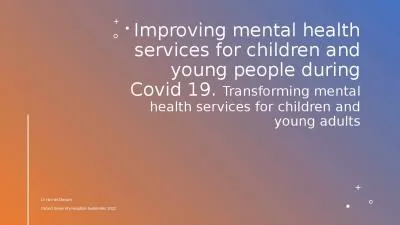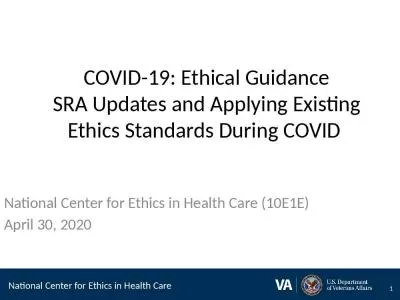PPT-COVID-19 Disease in Children
Author : ivy | Published Date : 2022-06-01
as of March 27 2020 David W Kimberlin MD University of Alabama at Birmingham Coronaviruses Enveloped RNA virus named for solar coronalike appearance of their virions
Presentation Embed Code
Download Presentation
Download Presentation The PPT/PDF document "COVID-19 Disease in Children" is the property of its rightful owner. Permission is granted to download and print the materials on this website for personal, non-commercial use only, and to display it on your personal computer provided you do not modify the materials and that you retain all copyright notices contained in the materials. By downloading content from our website, you accept the terms of this agreement.
COVID-19 Disease in Children: Transcript
as of March 27 2020 David W Kimberlin MD University of Alabama at Birmingham Coronaviruses Enveloped RNA virus named for solar coronalike appearance of their virions Second most prevalent cause of the . CTropMed. 3/17/20. COVID-19. SARS-CoV-2. 2019-nCov. HCoV-19. Disease. Virus Name. 7 Human Coronaviruses:. 4 normal; 3 “novel”. Alpha: . HCoV-229E. , . HCoV-NL63 . Beta: . HCoV-HKU1. , . HCoV-OC43. KUYA TEKA MAPHILISI YA MINA YATI ARVS • Loko mova mi �kelela swilaveko swo karhi, aminge boheki ku tshama milandza ti philisi ta n’wina tati ARVs e kliniki • Mingaha ti land Developed by the UCSF California Childcare Program with funding from the California Department of . Education . . August 14, 2020. 2020. Check the CCHP homepage for regular updates on COVID-19. https://cchp.ucsf.edu. What is a coronavirus?. A coronavirus is a virus that can cause respiratory illness. Some coronaviruses can cause the common cold. Recent notable coronavirus infections include:. Severe Acute Respiratory Syndrome (SARS). COVID-19 Vaccine Information. for Partner Communities. February 2021. COVID-19 and . Vaccine Basics. What we know about. Coronavirus Disease 2019. (COVID-19). COVID-19 is an illness caused by a coronavirus. This coronavirus is a new virus that was first recognized December 2019 in Wuhan, China. These are a large family of viruses, some of which infect animals, and others that can infect humans.. centres. Case Management Team. , . WHE/WHO, HQ Geneva . Classification of severity of patients with COVID-19 . infection. See WHO website for most up-to-date case definition: . https://www.who.int/emergencies/diseases/novel-coronavirus-2019/technical-guidance. Fakhradiyev. . Ildar. Since the first reports of COVID-19 (SARS-CoV-2) in January 2020 from Wuhan, China, the infection has spread rapidly across all continents . Introduction. Coronavirus infection in children is usually mild-to-moderate and many reported cases were asymptomatic . Kelly W. Burak, MD, FRCPC, MSc (Epid). Professor, Departments of Medicine & Oncology. University of Calgary, Calgary, AB, Canada. LIVER CO-MORBIDITIES AND COVID-19. Autoimmune Hepatitis. Diagnosis during pandemic. Training. Parent Presentation. Due to the nature of this pandemic, information and guidelines are frequently updated. For the most recent detailed information please visit the Phase 3 Guidance from VDOE and refer to your school district leadership. Whitney Jerkins, LPC. Objectives. Discuss the adverse effects of the COVID-19 Pandemic on the mental health of children and adolescents. . Discuss the impact of virtual school on the social development of children and adolescents. . Key points. This pathway must be considered as part of a whole system response, and will rely on teams working together.. Patients must be managed in the community where. . clinically. . possible. Transforming mental health services for children and young adults. Dr Harriet Stewart. Oxford University Hospitals . September. 2022. Transformation and innovation post-pandemic. Proportion of children with emotional and . SRA Updates and Applying Existing Ethics Standards During COVID . National Center for Ethics in Health Care (10E1E). April 30, 2020. Agenda. Updated SOFA scoring. Triage flow diagram – . UNDER CONSTRUCTION. Dr. Sonalika’s Eye Clinic provide the best Corneal disease treatment in Pune, Hadapsar, Amanora, Magarpatta, Mundhwa, Kharadi Rd, Viman Nagar, Wagholi, and Wadgaon Sheri
Download Document
Here is the link to download the presentation.
"COVID-19 Disease in Children"The content belongs to its owner. You may download and print it for personal use, without modification, and keep all copyright notices. By downloading, you agree to these terms.
Related Documents

